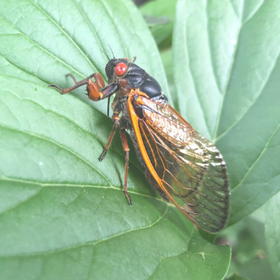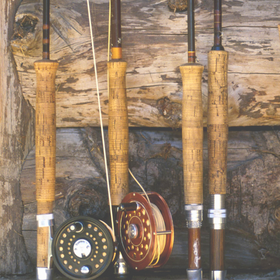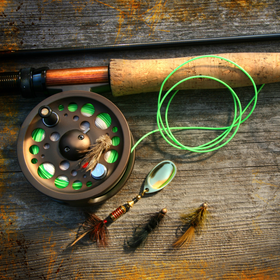Used properly Strike Indicators lead to more fish being caught. Used improperly they can actually hamper the fly fisher's ability to catch fish. How can one tell if their strike indicator is helping them or hurting them? Well that is the question we will try to answer here.
I was introduced to strike indicators about 20 years ago. A friend of mine had been fishing on guided trips in Montana, and came back with them, raving about them. Of course not wanting to be on the outside of the latest edge in fly fishing, I had to try them. I hated them. They interfered with my casting, they kept my nymph off the bottom, and every time I wanted to switch over to dry flies, I had to take off the strike indicator. Further I had 'set the hook' on several false indications.
It wasn't until several months later, while fishing a deep swift riffle, that the indicator really paid off. And I mean really paid off. Fishing at about a depth of six feet, in water faster then I would care to wade in today, the indicator would literally stop in mid-drift. Doubtful I would set the hook, after a few large trout, my doubts disappeared and I loved that little orange float on my leader. These strikes were virtually undetectable without it, the water so fast, and deep, by the time I felt the tug the fish would probably be gone.
From then on every time I nymphed, I used an indicator. Until one early spring on a drift trip, I was quickly falling behind my indicatorless fishing partner. All his hook-ups were on the very bottom, he said. And I reasoned my indicator was keeping me off the bottom. I dropped the indicator, and viola, I began catching fish on the bottom. I am sure I was missing some strikes as well, but missing some strikes was better than no strikes at all.
Putting it All together
To use or not to use an indicator, that is the question. Or when to use it, and when not to. There are times when I prefer not to use an indicator while using sub-surface flies. One is in very crystal clear water, when stealth is of utmost importance. Indicators can cast an unnecessary shadow, and they also have a bit of plop to them when hitting the water. I don't use one when fishing emergers either, their strikes are almost as easy to detect as dry fly fishing. And when fish are gently sucking in emerger patterns, I don't find the indicator reacts any better than I do. And as mentioned above while trying to hook up on the bottom they can interfere. Although there are ways around that problem. One is to use Palsa Strike Indicators. When using weight or flies treated with Xink, the Palsa will go sub-surface, you can still see it, depending on water visibility. And it will still work. You can also adjust the depth of leader below your indicator. If you are fishing depths around six or seven feet, make sure you have that much leader below the indicator. I rarely have my indicator more than two feet below the fly line anyway.
Other than that I use them anytime I am dead drifting or using the wet fly swing. Especially in faster water and/or large rivers. If you have never tried them, you will be amazed at what you are missing.
Free Standard Shipping
On orders $45
On orders $45




